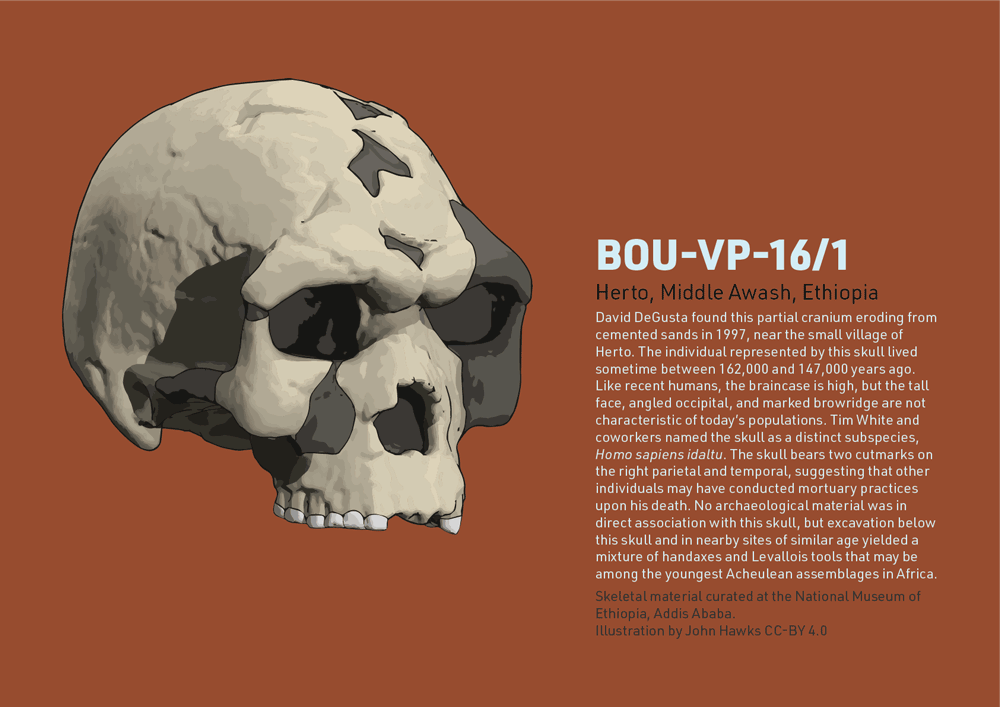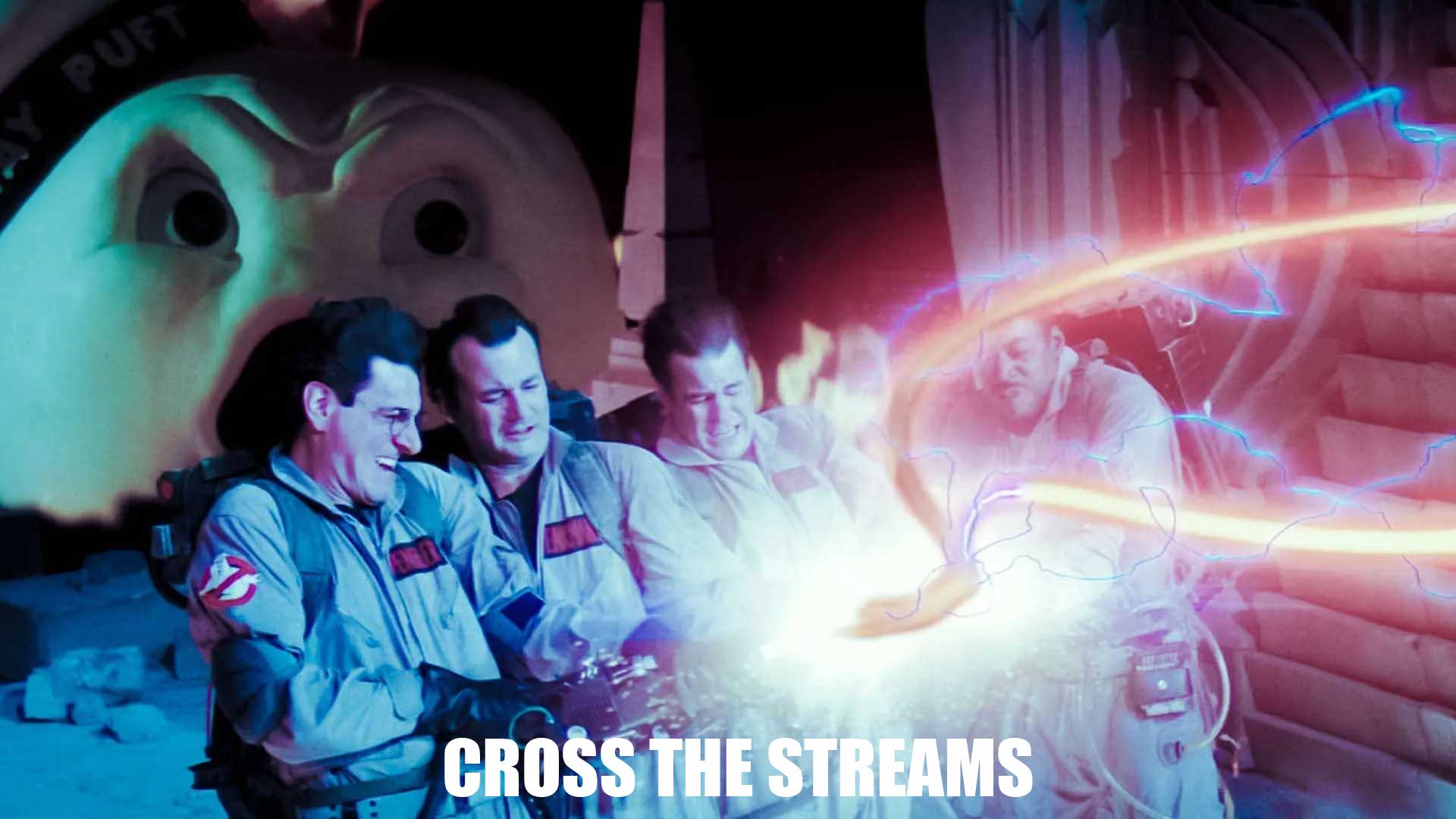Fossil profile: BOU-VP-16/1 and mortuary practice
A fossil from Bouri, Ethiopia, represents an individual whose skull was processed after his death.

Some fossil hominin sites from the Middle and Late Pleistocene have an unusual overrepresentation of skulls compared to the rest of the skeleton. Anthropologists have long been interested in such skull-rich assemblages as possible evidence of mortuary practices by ancient humans and human relatives. In many recent cultures, people have reserved the skulls of dead individuals for special treatment. Some cultures separate skulls them from the rest of the skeleton and conserve them for many years, others retrieve skulls from buried bodies and use them as ritual objects, or bury them beneath special buildings.
In 1997, a team of archaeologists and paleontologists led by Tim White found three skulls in the area around Herto, Ethiopia. These skulls were not buried together but were all separated by some distance, all eroding from an ancient sandstone that the team was able to place between 160,000 and 154,000 years old. Each of the three skulls had cutmarks from stone tools. One of the skulls, BOU-VP-16/5 which belonged to a child of around 6-7 years of age, has several series of cutmarks related to defleshing, and has polish on the edges of the remaining bone where the occipital has been removed. The adult BOU-VP-16/1 skull has cutmarks on its parietal and temporal bones. Although all the skulls may represent individuals that lived hundreds or thousands of years apart, they each have evidence of postmortem processing such as defleshing and cutting, and in the child’s case, some level of additional handling after defleshing. Despite intensive search and further excavation, during which the teams identified many bones and bone fragments from other animals, they found no additional parts of these or other hominin skeletons.
In fieldwork, there are multiple pathways by which skulls can come to be overrepresented. The bones of the cranial vault and mandible are relatively durable and are overrepresented in many fossil assemblages compared to postcranial elements. In humans, cranial elements tend to be very recognizable compared to other vertebrate fauna even when fragmented, which leads to a collection bias by paleontologists who may not so readily distinguish hominin long bone fragments of similar size. In circumstances where water may carry and disaggregate parts of skeletons, water might also sort bones and leave skulls overrepresented in some areas (and other bones overrepresented elsewhere).
In the Herto case, the cutmarks and polish provide evidence for some kind of cultural practice. Even if this were dietary cannibalism, nonetheless intentional hominin behavior was present. This cultural evidence must come into our calculation of how skulls came to be overrepresented at this site. That makes this a very important site to understand the breadth of mortuary behavior in Pleistocene humans.
John Hawks Newsletter
Join the newsletter to receive the latest updates in your inbox.



